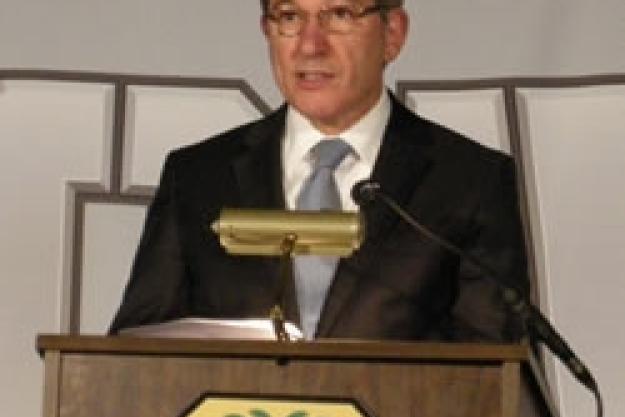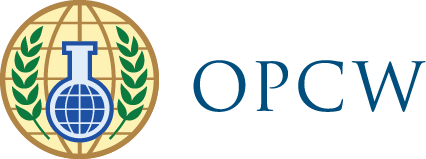
OPCW Director-General Ahmet Üzümcü addresses a ceremony marking the completion of chemical weapons destruction activities at seven facilities by the U.S. Army Chemical Weapons Agency (CMA).
OPCW Director-General Ahmet Üzümcü visited the United States of America on 16 and 17 May 2012 for meetings with senior U.S. Government officials in Washington D.C. and addressed a ceremony marking the completion of chemical weapons destruction activities at seven facilities by the U.S. Army Chemical Weapons Agency (CMA).
At the Department of Defence the Director-General met with Ms Madelyn R. Creedon, the Assistant Secretary for Global Strategic Affairs (GSA) and other senior officials; at the Department of State the Director-General met with Ms Rose Gottemoeller, the Acting Under Secretary for Arms Control and International Security and the Assistant Secretary for Arms Control, Verification and Compliance. In informative exchanges they discussed the major challenges that OPCW faces both today, and in the next few years.
The closing CMA ceremony was held in the Chemical Demilitarisation Training Facility at Aberdeen Proving Ground in nearby Maryland. The event marked the safe destruction of nearly 90% of the chemical weapons declared to the OPCW by the United States, including almost 28,000 tons of blister and nerve agents and associated munitions.
In his remarks [PDF – 20 KB], the Director-General recalled his visits to the CMA destruction facilities at Anniston and Tooele, which gave him a better understanding of the human efforts, technical challenges, regulatory constraints and financial expenses involved in these efforts. He commended the “unwavering commitment” of the United States to uphold its obligations under the Chemical Weapons Convention, and the “openness and transparency” it has demonstrated since the Convention’s entry into force.
